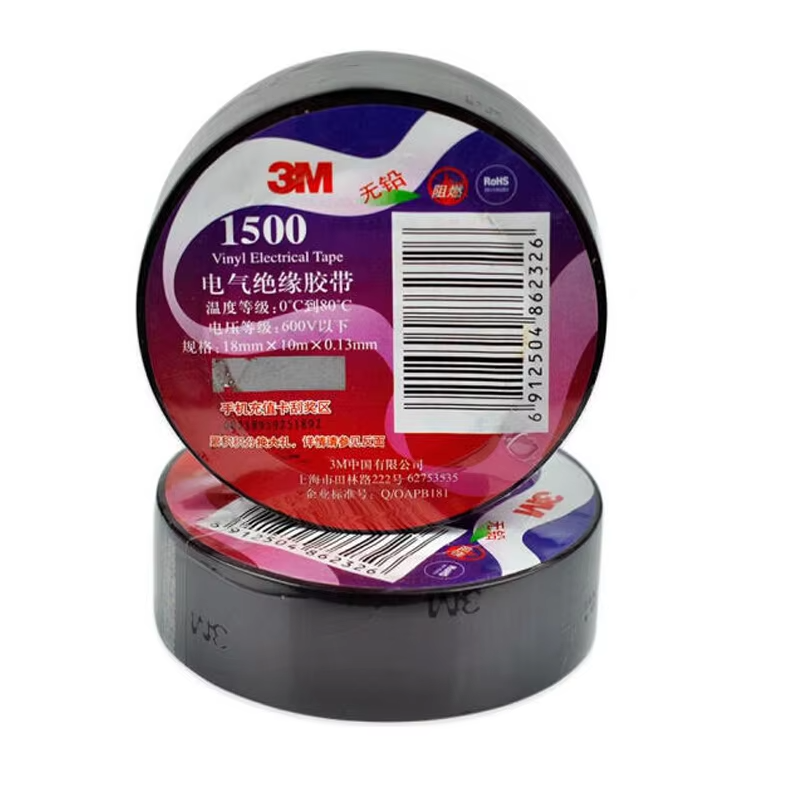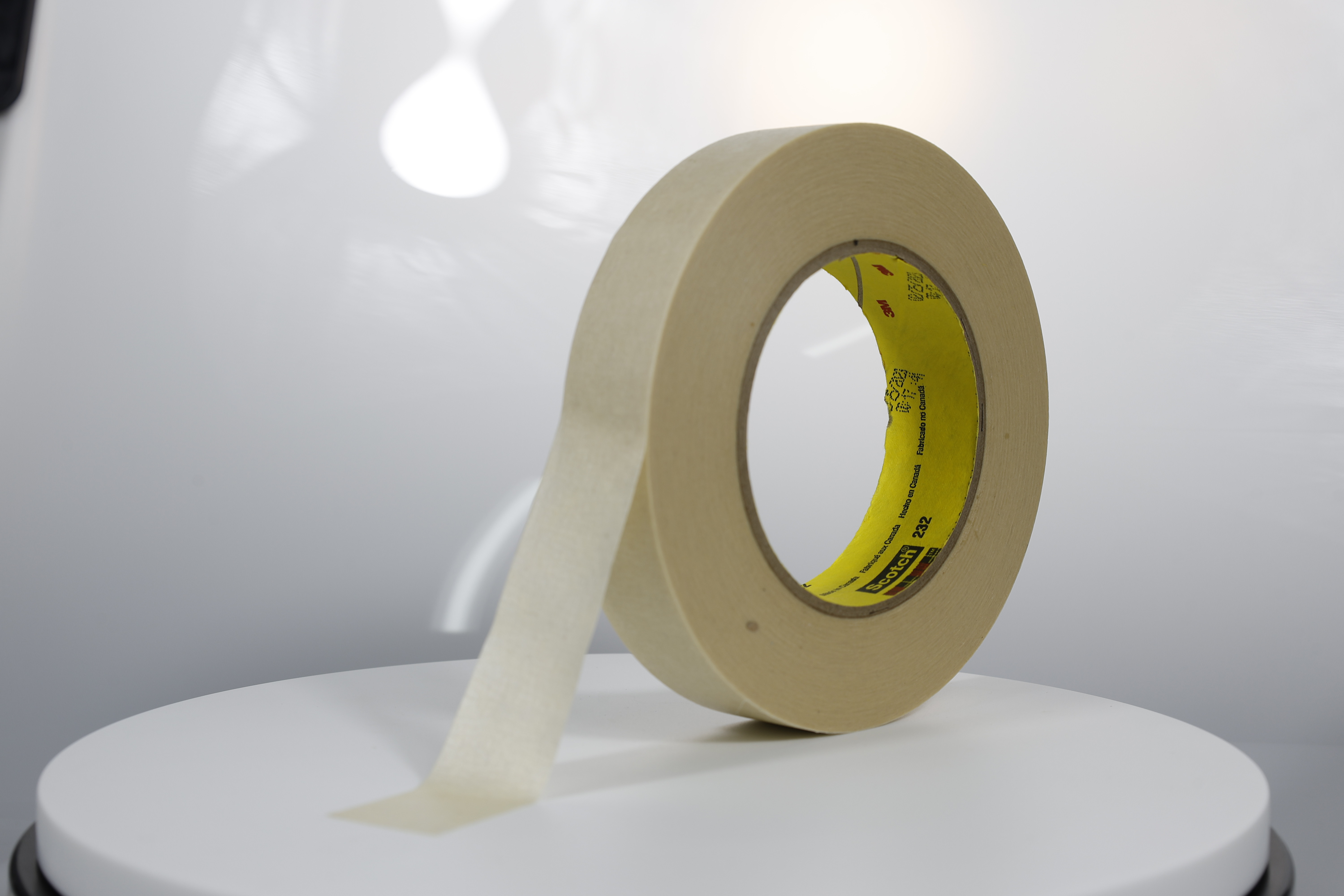Scared of electrical problems outdoors? Choose the right UV - resistant electrical tape and relax!
Key Features of UV-Resistant Electrical Tape
Durability Against Sun Exposure
UV-resistant electrical tape is engineered to withstand prolonged exposure to sunlight without degrading. This type of tape incorporates advanced polymer technology that enhances its durability, preventing common issues like cracks and fading. Such features are crucial for applications where long-term exposure to the sun is inevitable. Studies substantiate that tapes with UV protection can maintain their integrity for over five years in outdoor conditions, significantly outperforming regular tapes that may start degrading in mere months.
Strong Adhesive Performance in Outdoor Conditions
The adhesive in UV-resistant tapes retains its bonding strength amidst fluctuating temperatures and humidity levels. This capacity is essential for ensuring that the tape adheres firmly to various surfaces, such as wood, metal, and plastic. Expert assessments indicate that tapes with high-performance adhesives significantly reduce the risks of peeling or lifting in harsh climates. This makes them a reliable choice for outdoor environments where strong adhesive performance is critical.
Flexibility for Varied Surfaces
UV-resistant electrical tape is designed to be flexible, allowing for seamless application on irregular surfaces. This flexibility is key to achieving secure bonds, regardless of surface contours, thereby expanding its usability across different applications. Data from research and development show that flexible tapes outperform their rigid counterparts by providing superior application versatility, making them an ideal choice for complex surfaces requiring a strong adhesive bond.
Benefits of UV-Resistant Tape for Outdoor Use
Preventing Degradation from Sunlight
UV-resistant tape is engineered to prevent degradation caused by UV rays, significantly reducing maintenance requirements. Its capacity to block harmful UV radiation considerably prolongs the lifespan of outdoor electrical installations. A study indicates that UV protection has the potential to decrease degradation rates by up to 80% compared to conventional tapes. Such effectiveness diminishes the need for frequent repairs and replacements, offering a long-term solution to preserve the integrity of installations subjected to intense sunlight.
Resistance to Weather Extremes
This specialty tape remains durable and functional amidst extreme weather conditions, such as heavy rain, snow, or intense heat. Manufacturers utilize weather-resistant materials to ensure that the tape retains its performance over prolonged exposure to these harsh environments. Research consistently shows that UV-resistant tapes outperform traditional tapes in extreme conditions, withstanding the wear and tear that comes from prolonged exposure to fluctuating environmental elements. This resilience makes it a reliable option for outdoor applications across various climates.
Long-Term Cost Efficiency
While the initial cost of UV-resistant tape may be higher, its durability translates into significant long-term savings by reducing maintenance expenses. High-quality tapes require less frequent replacement, conserving both time and financial resources. Financial projections suggest that using UV-resistant tape can save companies up to 30% of costs associated with repairs and replacements over time. Therefore, investing in such a tape, despite the higher upfront expense, can prove economically beneficial by minimizing ongoing maintenance efforts and expenses.
How to Choose the Best UV-Resistant Electrical Tape
Material Comparison: PVC vs. Other Tapes
When selecting UV-resistant electrical tape for outdoor projects, comparing materials is crucial. PVC is often the material of choice due to its reasonable cost, flexibility, and impressive durability. Unlike rubber or cloth tapes, which might offer specific advantages such as improved stretch or texture, PVC tape undoubtedly provides superior weather resistance. This makes it particularly effective for outdoor applications where exposure to elements like rain or sunlight is unavoidable. According to industry sources, electricians frequently prefer PVC-based tapes for their outdoor tasks, underscoring its popularity and reliability in such settings.
Assessing Adhesive Strength & Temperature Tolerance
The adhesive strength and temperature tolerance of UV-resistant tape are critical factors affecting its performance. Choosing electrical tapes that specify high adhesive strength ensures secure application across a range of fluctuating temperatures. Given the variety in adhesive quality, reviews or manufacturer-provided temperature ratings should be carefully considered to prevent tape failure. Testing data indicates that the most effective adhesives can withstand temperatures ranging from -20°F to 200°F seamlessly, ensuring reliability in both cold winters and hot summers. This aspect is vital for maintaining the integrity of electrical installations in diverse environmental conditions.
Matching Tape to Specific Outdoor Applications
Choosing the right UV-resistant tape also involves matching the tape's specifications to particular project requirements and outdoor applications. This means thoroughly evaluating the specific needs dictated by weather conditions and surface characteristics of each project. For instance, electrical insulation might necessitate tape with higher adhesive strength, while protective wrapping could benefit from enhanced flexibility. Guidelines from leading electrical organizations emphasize the importance of aligning tape properties with specific use cases to ensure optimal performance. Making informed selections based on these parameters enhances the effectiveness and lifetime of outdoor electrical installations.
Maintenance and Application Tips
Proper Surface Preparation Techniques
Proper surface preparation is crucial for achieving optimal adhesion when applying tapes. To ensure the tape adheres correctly, it's essential to work with clean, dry surfaces. Removing any dust or grease from the area can significantly enhance the effectiveness of the adhesive. Leading adhesive manufacturers emphasize the importance of a clean substrate, as contaminants can compromise adhesion quality. Best practices for surface preparation include using a suitable solvent to wipe the surfaces effectively before applying the tape. This step ensures that the tape sticks properly and lasts longer, providing a durable bond.
Avoiding Common Mistakes with Double-Sided & Masking Tapes
Avoiding common mistakes during the application of double-sided and masking tapes can prevent failures and ensure success. Using the correct type of tape for each specific application is critical, as using the wrong type may hinder performance and lead to costly issues. For instance, if using masking tape instead of a strong adhesive tape for heavy-duty tasks, it might compromise the project. Additionally, stretching the tape during application is a common mistake that can affect its adhesive properties, leading to poor bonding. Research indicates that closely following manufacturer guidelines and recommendations significantly reduces errors and improves tape performance. By using the right product and correctly following instructions, you can achieve the best results.
Storage Recommendations for Prolonged Lifespan
Proper storage of tapes can significantly prolong their lifespan and maintain product effectiveness. Storing tapes in cool, dry areas away from direct sunlight is essential, as exposure to extreme temperatures can degrade adhesive performance and reduce the useful life of the tapes. According to industry experts, maintaining a stable environment free from humidity fluctuations helps preserve tape integrity. Additionally, it's advisable to rotate stock, using older rolls first to prevent aging and degradation. This practice ensures that all tapes are used within their optimal usability period, maintaining their adhesive strength and functionality over time.
Recommended Products
 Hot News
Hot News
-
TAPE Team Conquers Shenzhen’s Phoenix Mountain: Unity, Ambition, And New Heights In 2025
2025-02-21
-
The Role of Polyimide Electrical Tape in Electronics Insulation
2025-01-21
-
High Strength Double-sided Tape for Secure Bonding
2025-01-15
-
Durable Foam Tape for High-Performance Applications
2025-01-10
-
High Temperature Resistant Masking Protective Tape for Extreme Conditions
2025-01-01
-
Adhesive Tapes Market size is set to grow by USD 23.89 billion from 2024-2028, Increasing demand from end-user industries boost the market!
2024-08-22






